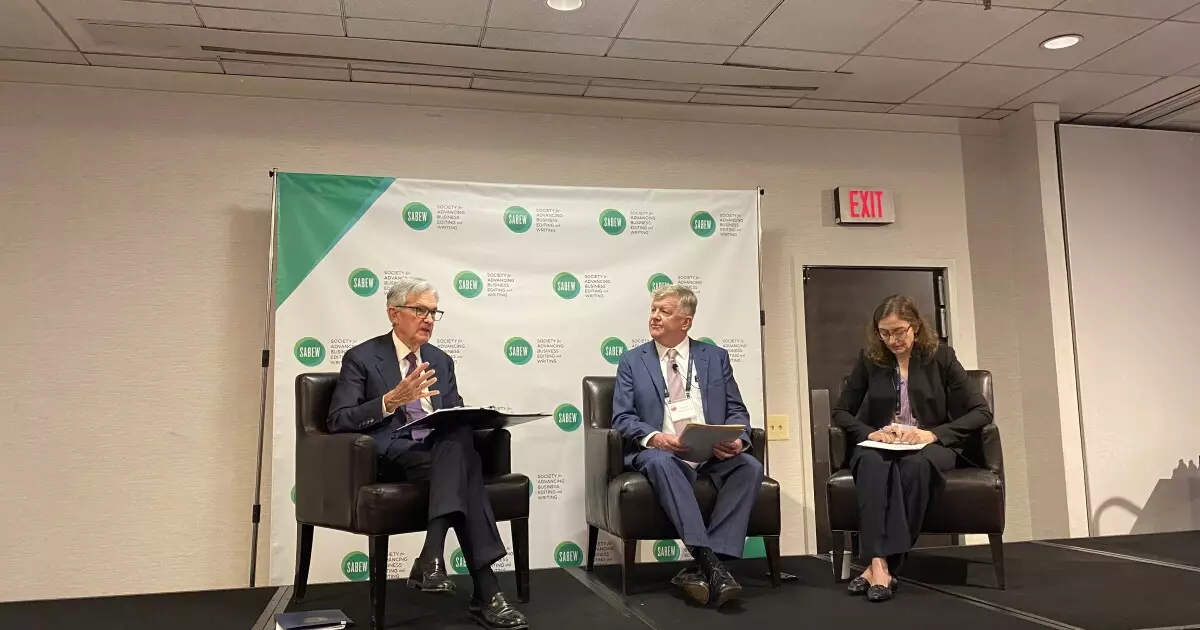In the wake of a series of controversial policies introduced by the Trump administration, discussions surrounding the U.S. economy have reached a fever pitch. The administration’s aggressive stance on tariffs, immigration, and government spending has created a complex landscape. Federal Reserve Chair Jerome Powell recently highlighted the central bank’s cautious approach to interest rate adjustments amid this uncertainty. The Fed’s decision to withhold immediate actions on monetary policy is not just prudent; it symbolizes the broader turmoil enveloping the economy. Powell’s acknowledgment of the current economic indicators being “still in a good place” seems almost detached from the very real anxiety that American consumers feel.
It’s clear that while inflation is moderating, it is still significantly higher than many can manage. Many households are grappling with elevated prices and stagnant wages, and Powell’s reassurances ring hollow against the backdrop of consumer sentiment that reflects disquiet and distress. The inclination to save rather than spend has never been more pronounced, yet underlying this behavior is a resilient spirit of consumption—an inclination to maintain spending habits despite fears of economic downturn.
The Double-Edged Sword of Tariffs
The tariffs, which were initially claimed to protect American jobs and industries, appear to be backfiring. While Powell aptly noted the forecasts of increased tariff impacts exceeding earlier expectations, there is a growing concern that these policies will stifle economic growth rather than enhance it. The reality is stark: Businesses are already feeling the heat as they grapple with higher input costs. Smaller firms, often the backbone of the economy, are particularly vulnerable. Many are experiencing a squeeze that might force them to reconsider their operational capabilities, potentially leading to layoffs that could orbit back to the very employment goals Powell champions.
One cannot ignore the irony here; policies intended to lift American businesses seem to be at odds with the foundational markets that drive our economy. As inflation creeps into the fabric of retail pricing, consumers are paying more while the heart of our economy—consumer spending—heaves under the strain. Instead of catalyzing job growth and wage increases, the administration’s insistence on tariffs may inadvertently reintroduce the very cycles of inflation and employment strife that the nation has endeavored to escape.
Immigration and the Labor Market’s Fragility
Immigration policy under Trump has increasingly come under fire, with implications reaching deep into labor market dynamics. Restricting both legal and illegal immigration will inevitably lead to labor shortages in industries that rely heavily on immigrant labor, such as agriculture and hospitality. Powell’s assertion that the job market remains “broadly in balance” disregards the impending structural shifts that stringent immigration policies will invoke. As businesses struggle to fill positions, the resultant friction could exacerbate inflation, throwing the economy into disarray.
Moreover, cutting back on legal pathways for immigration sends a message that long-term growth through diversity is not valued, consequently hampering innovation and competitiveness. In an increasingly globalized world, where the U.S. economy must compete against countries that are more welcoming to talent and labor, these policies seem outdated and counterproductive. The message to aspiring workers and entrepreneurs is clear: America may not be as open for business as it once claimed to be.
A Future Shrouded in Ambiguity
As Powell prepares for his term to conclude, the looming uncertainty weighs heavily not just on monetary policy, but on every citizen impacted by these economic ripples. The “wait-and-see” tactic by the Fed is more than a temporary pause; it underscores a deeply entrenched apprehension about future economic stability. We are potentially on the brink of a pivotal moment where the decisions made today will have ramifications for generations.
It is vital not to overlook the psychological impact of these economic policies on the general populace. Households burdened by rising costs and stagnant wages will increasingly look for assurance and stability from their government and financial institutions. Amid ongoing inflation and shifting labor dynamics, consumers will continue to demand clarity and accountability from their leaders—expectations that, arguably, are not being met.
In this volatile landscape, what’s needed is not a passive acquiescence to market forces but bold, thoughtful action that acknowledges and addresses the harsh realities faced by many Americans. The path forward must prioritize sustainable economic practices that rejuvenate consumer confidence and foster a labor market unencumbered by unnecessary barriers. Only then can we hope to navigate the storm that Trump’s policies have invoked.

